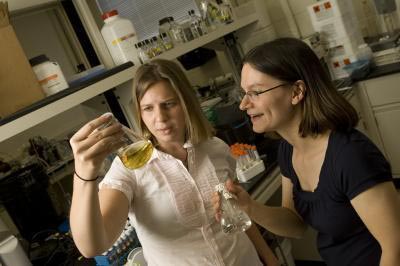Genetic tools help clean drinking water
A type of genetic tool used by medical researchers can also be used as a new approach to filter harmful bacteria and viruses from the water.
In a series of practical demonstrations, Duke University engineers have demonstrated that short parts of a genetic material can target a binding part of a gene in a common fungus. see in drinking water and make it stop working. If this new method can be completed, researchers believe it could serve as the basis for a device to help solve the problem of safe drinking water in third-world countries without equipment. Water treatment.
A relatively new technique called RNA interference (RNA interference) has taken advantage of short pieces of genetic material to bind - like a pin and key - with a corresponding segment of a gene. destination. When these small pieces enter a cell and attach to the corresponding gene segment, they can inhibit or block the action of the target gene. This approach is being used more and more in biomedical research, but has not yet been applied to environmental issues.
Sara Morey - a doctoral student at the Claudia Gunsch laboratory, and a professor of civil engineering at Duke University's Pratt School of Engineering - says ' Pathogens whether bacteria or viruses It is also one of the main risks to drinking water in developed and underdeveloped countries. Our data shows that we can prevent the activity of a specific gene in a fungus in drinking water, which allows us to believe that RNAi technology promises to be a gene inactivation tool. for controlling the proliferation of bacteria and viruses spread through drinking water. "
Morey presented her experimental results on June 3, 2008 at the annual meeting of the American Society for Microbiology in Boston.

Sara Morey (left) and Claudia Gunsch are examining the results of their latest experiment.(Photo: Duke University)
Morey said: In addition to helping to address drinking water issues in underdeveloped countries, this new approach could also guide restrictions related to water treatment in more developed countries. . The methods used to treat water today such as chlorine bleach and ultraviolet light can cost a lot of money to operate and the results themselves can affect the taste and smell of water.
Although such methods have been developed for years, problems can arise once the treated water is introduced into the distribution system - where pathogens are contained. For that reason, water is often over-chlorinated at the plant to provide enough concentrated chlorine to be used in water pipes to neutralize pathogens. Scientists say this explains why people who live near water treatment plants often taste or smell more chemicals than those who live far away from the water treatment plant. In addition, chlorine can react with other organic substances in the treatment system, leaving potentially toxic by-products.
Effective ultraviolet light in disabling pathogens in the treatment plant has no effect once the water is pumped out of the plant. Gunsch said that many pathogens are increasing resistance to the effects of chlorine and ultraviolet light, so new options are needed.
'We envision creating a system based on RNAi technology, which will look from the outside like the most commonly used water purifiers today,' Gunsch said. 'This approach will become particularly attractive in countries with underdeveloped industries without water treatment systems. This' multipurpose 'strategy will help the countries mentioned above make water safe without the cost of water purification infrastructure'.
The first model will be a filter attached to RNAi technology to remove pathogens when water is passed through the machine. Gunsch said these filters need to be replaced regularly, and she believes it could theoretically be possible to create a live or self-replicating system, meaning that the system would not need to be replaced.
Researchers are currently conducting side experiments to navigate to other areas of the mushroom genome. For their proven practical experiments, they tested the RNAi technique on an unnecessary gene that was easy to control. They are currently testing this approach to inactivate or inhibit the genes needed for pathogen survival.
They are also planning to test this strategy in drinking water that contains the number of different pathogens at the same time, as well as trying to determine if the optimal concentration should be in the country to achieve efficiency.
The experiments are supported by Duke's Pratt School of Engineering.
- Equipment to produce clean drinking water from dilute air
- Australia tests the system for producing drinking water from the air
- Simple recipe for safe drinking water
- A cup of clean water contains ... 10 million bacteria
- Simple tool to measure the safety of drinking water
- 6 technologies used to create clean drinking water: taken from air, filtered seawater ...
- Make a drink from sweat
- Drinking water this way, cancer, diabetes will never reach you
- Water drinking habits to remember
- Clean water and numbers to speak
- English: The level of e.coli contamination in clean water supplies increases 5 times
- 'Millions of dollars' is spent on filtering urine into drinking water
 Why do potatoes have eyes?
Why do potatoes have eyes? 'Tragedy' the world's largest carnivorous life: Death becomes ... public toilet
'Tragedy' the world's largest carnivorous life: Death becomes ... public toilet Tomatoes were once considered 'poisonous' for 200 years
Tomatoes were once considered 'poisonous' for 200 years Detecting microscopic parasites on human face
Detecting microscopic parasites on human face